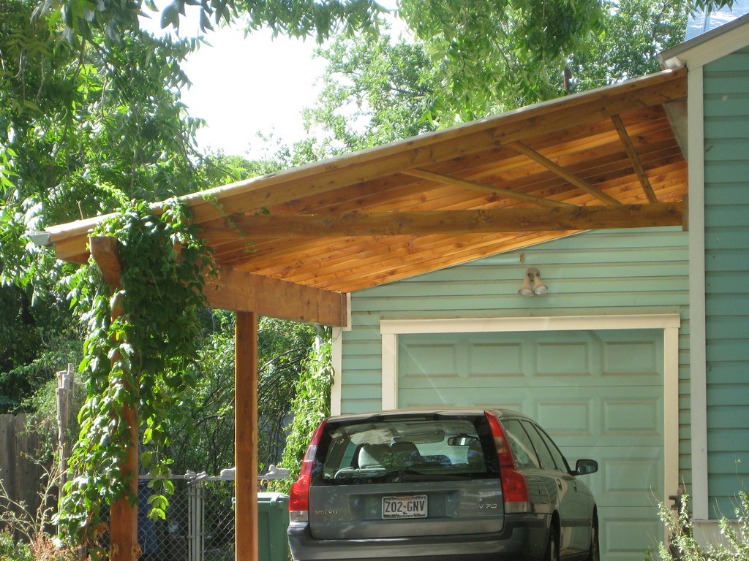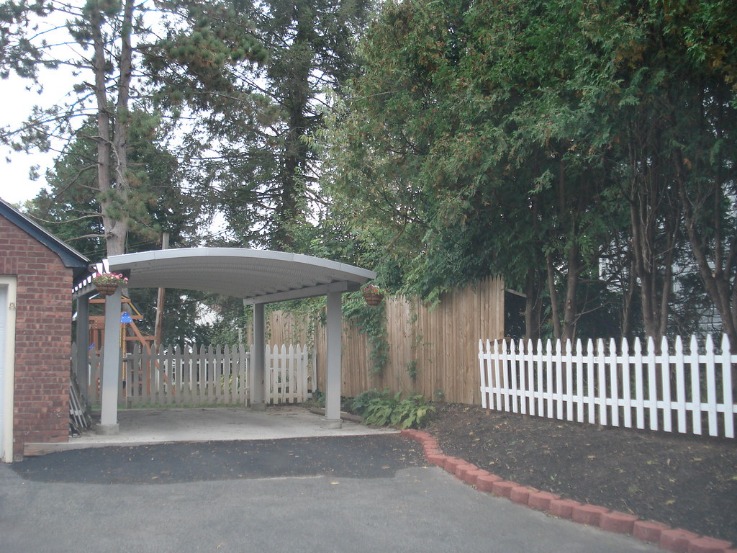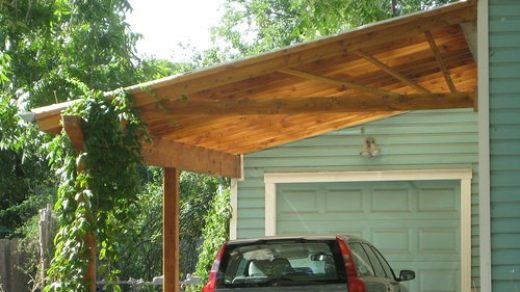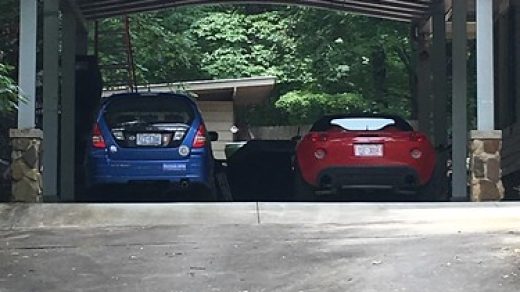Types of Carport Brackets
Carport brackets play a vital role in providing structural support and stability to your carport, ensuring safety and durability. With a variety of types available, each designed to suit different construction needs and aesthetic preferences, choosing the right brackets can significantly enhance the strength and appearance of your carport. Understanding the different types of carport brackets can help you make an informed decision for your project.
Wall-Mounted Brackets
Wall-mounted brackets are a popular type of carport bracket designed to provide sturdy support for carports attached directly to a building’s exterior wall. These brackets come in various styles and materials to suit different structural needs and aesthetic preferences. Typically made from steel, aluminum, or other durable metals, wall-mounted brackets ensure maximum strength and stability, preventing sagging or collapse under the weight of the roof and weather conditions.
There are several types of wall-mounted carport brackets, including L-shaped brackets, Z-shaped brackets, and custom-designed support brackets. L-shaped brackets are simple and highly effective, providing support along two perpendicular planes. Z-shaped brackets offer additional reinforcement and are ideal for larger or heavier carports. Custom brackets can be tailored to specific architectural requirements, ensuring a perfect fit and optimal support. When choosing wall-mounted brackets, it is essential to consider the weight of the roof, the type of wall material, and environmental factors such as wind and snow load to ensure safety and durability.
Post-Mounted Brackets
Post-mounted brackets are essential components in the construction of durable and stable carports. They provide strong support for the structure by securely attaching the posts to the foundation or ground, ensuring safety and longevity. Various types of post-mounted brackets cater to different design needs and load requirements.
- Base Plate Brackets: These brackets feature a flat plate that attaches to the concrete or ground surface, with posts mounted on top. They offer stability and ease of installation.
- Post Steel Corner Brackets: Designed to reinforce the connection at corner posts, these brackets provide extra strength at junction points, reducing movement and increasing durability.
- Adjustable Post Brackets: These brackets allow for height and angle adjustments, making them ideal for uneven surfaces or specific design preferences.
- Flanged Brackets: With flanged sides, these brackets provide additional support and a larger surface area for secure attachment, often used in heavy-duty carports.
- Post Mount Brackets with Bolt Attachments: Equipped with bolt holes, these brackets enable a firm and permanent connection to the ground or foundation, ensuring structural integrity.
Adjustable Brackets
Adjustable carport brackets are versatile components designed to support and secure the structure of a carport, allowing for customization in angle and height. These brackets are ideal for situations where precise alignment and flexibility are required, enabling users to adapt the carport to various spatial constraints and design preferences. Typically made from durable materials such as steel or aluminum, adjustable brackets provide strength and stability while offering ease of installation and adjustment. They often feature locking mechanisms to hold the desired position firmly, ensuring safety and long-term durability of the carport structure.
Custom Fabricated Brackets
Carport brackets are essential components that provide support and stability to carports, ensuring safety and durability. There are various types of brackets designed to meet different structural needs, including standard and custom options to fit specific projects.
Types of Carport Brackets
- Standard Metal Brackets: These are commonly used for typical carport structures, made from steel or aluminum for strength.
- Adjustable Brackets: Designed to offer flexibility in angle and position, suitable for custom roof pitches.
- Corner Brackets: Provide additional support at the connection points of the carport frame for enhanced stability.
- Beam Brackets: Support horizontal beams and distribute weight evenly across the structure.
Custom Fabricated Brackets
Custom fabricated brackets are tailor-made to meet specific design requirements or unique site conditions. They are often made from high-quality steel or aluminum and can be engineered to match exact measurements, load requirements, and aesthetic preferences. These brackets allow for innovative design solutions, seamless integration into existing structures, and improved structural integrity for specialized carport projects.
Materials Used in Carport Brackets
Carport brackets are essential components that provide the necessary support and stability for attaching a carport structure to a building or fixing it independently. The durability and strength of these brackets largely depend on the materials used in their fabrication. Choosing the right materials ensures that the carport remains sturdy, resistant to environmental elements, and has a long lifespan. Various materials such as steel, aluminum, and galvanized metals are commonly employed to meet different structural and aesthetic requirements.
Steel
Steel is a popular and reliable material used in the manufacturing of carport brackets due to its strength and durability. It provides excellent support for the structure, ensuring safety and stability over time. Typically, steel brackets are coated with protective layers such as galvanization or paint to prevent rust and corrosion, especially when exposed to outdoor elements. The versatility of steel allows for various designs and sizes, making it suitable for different types of carports. Choosing steel for carport brackets guarantees long-lasting performance and the ability to withstand harsh weather conditions effectively.
Aluminum
Aluminum is a popular material used in carport brackets due to its lightweight yet durable properties. It offers excellent resistance to rust and corrosion, making it ideal for outdoor applications exposed to varying weather conditions. Aluminum brackets are easy to install and maintain, providing long-lasting support for carports. Additionally, aluminum’s aesthetic appeal, with a sleek and modern look, enhances the overall appearance of the carport structure. Its versatility allows for different designs and sizes to accommodate various carport styles and sizes.
Wood

Wood is a popular material used in the construction of carport brackets due to its natural aesthetic and ease of customization. It offers versatility in design, allowing homeowners to create rustic or modern looks that complement their overall architecture. When choosing wood for carport brackets, options like cedar, redwood, and pressure-treated lumber are common because of their durability and resistance to weather elements. Proper sealing and maintenance are essential to prolong the lifespan of wooden brackets, preventing rot, warping, and insect damage. Overall, wood provides a cost-effective and attractive solution for supporting carports, especially when treated and maintained appropriately.
Composite Materials
Carport brackets are essential components that provide support and stability to carports, ensuring they can withstand various environmental conditions. Among the various materials used in manufacturing these brackets, composite materials have gained popularity due to their durability and versatility. Composite materials typically consist of a combination of fibers, such as fiberglass or carbon, embedded in a resin matrix, which offers high strength-to-weight ratios and resistance to corrosion. These properties make composite carport brackets an ideal choice for outdoor structures exposed to moisture, UV rays, and temperature fluctuations. Additionally, composite materials are lightweight yet robust, facilitating easier installation and reduced structural stress. They also require less maintenance compared to traditional metal brackets, as they do not rust or degrade easily over time, ensuring a longer lifespan for the carport structure. Overall, composite materials offer a reliable, resilient, and cost-effective solution for modern carport brackets, combining strength, longevity, and aesthetic appeal.
Design Considerations for Carport Brackets
Design considerations for carport brackets are essential to ensure the stability, durability, and safety of the structure. Proper selection of materials, load-bearing capacity, and corrosion resistance play a crucial role in the longevity of the carport. Additionally, the design should complement the overall aesthetic of the building while providing easy installation and maintenance options. Understanding these factors helps in creating robust and reliable carport supports that can withstand various environmental conditions.
Load Capacity
Design considerations for carport brackets focusing on load capacity are essential to ensure safety and durability. Proper assessment of the maximum weight the brackets need to support, including the car’s weight, snow loads, and wind forces, is crucial in selecting materials and design features. Materials such as steel, aluminum, or galvanized steel provide different levels of strength and corrosion resistance, influencing load capacity. The design should incorporate adequate reinforcement, appropriate fixing methods, and secure attachment points to withstand environmental stresses. Additionally, understanding local building codes and considering potential future loads can help in selecting brackets that effectively support the carport over its lifespan. Ensuring that brackets are rated for the expected load conditions minimizes the risk of failure and prolongs the structure’s integrity.
Weather Resistance
When designing carport brackets, weather resistance is a crucial factor to ensure durability and longevity. These brackets are constantly exposed to elements such as rain, snow, wind, and sunlight, which can cause deterioration over time if not properly addressed. Selecting materials like galvanized steel, aluminum, or treated wood can significantly enhance weather resistance, preventing rust, corrosion, and decay. Additionally, incorporating protective coatings such as powder coating or weatherproof paint provides an extra layer of defense against environmental damage. It is also important to consider proper design features like water drainage channels and ventilated structures to minimize moisture accumulation and reduce the risk of corrosion. Overall, a thoughtful approach to material choice and protective measures in the design of carport brackets will ensure they withstand harsh weather conditions and maintain their structural integrity for years to come.
Ease of Installation
Design considerations for carport brackets should prioritize ease of installation to ensure a straightforward setup process. Choosing brackets with pre-drilled holes and clear, detailed instructions can significantly reduce assembly time and minimize errors. Materials should be lightweight yet durable, such as galvanized steel or aluminum, to facilitate handling without compromising strength. Additionally, universal design features that accommodate various roof types and structures can streamline installation for different projects. Modular components that snap or bolt together easily allow for adjustments and customization, making the process more user-friendly. Incorporating clear markings and standardized sizes can further enhance compatibility with common building components, ultimately making the installation process more efficient and accessible for both professionals and DIY enthusiasts.
Aesthetic Compatibility
When selecting carport brackets, aesthetic compatibility is a crucial factor to ensure the structure complements the overall design of the property. The brackets should seamlessly blend with the architectural style, whether it’s modern, traditional, or rustic. Choosing materials and finishes that match or enhance the existing exterior elements can create a cohesive appearance. Additionally, the visual design of the brackets, including their shape and detailing, can influence the aesthetic appeal, making sure they do not appear bulky or out of place. Well-designed brackets not only support structural integrity but also contribute to the visual harmony of the carport setup.

Installation Guidelines
Installation guidelines for carport brackets are essential to ensure a secure and durable structure. Proper installation not only enhances the safety and stability of your carport but also extends its lifespan. Following these guidelines carefully helps in achieving an efficient setup and prevents potential issues caused by improper fastening or positioning.
Assessing Structural Support
When installing carport brackets, it is essential to carefully assess the structural support to ensure safety and stability. Start by evaluating the existing supporting surfaces, such as walls, beams, or posts, to confirm they can bear the weight of the carport and withstand environmental forces like wind and snow load. Check for any signs of damage, weaknesses, or deterioration that may require reinforcement or repair before installation. Additionally, measure and mark the precise locations for brackets, ensuring they align correctly with the supporting structures. Use appropriate tools and hardware that are rated for the load capacity of the carport. For optimal safety, consider consulting a structural engineer to verify that the support framework meets local building codes and standards. Proper assessment and preparation of the support structure are critical steps in achieving a secure and durable carport installation.
Tools and Equipment Needed
Installing carport brackets requires careful planning and the right tools to ensure a secure and durable structure. Proper installation guidelines help guarantee safety and stability for your carport. It is essential to follow manufacturer instructions and local building codes.
Tools and equipment needed include a drill, concrete bit, wrench or socket set, level, measuring tape, safety goggles, gloves, and a chalk line. You may also need a hammer, anchor bolts, and a ladder depending on the height and installation environment. Using the appropriate tools ensures accurate placement and secure fastening of the brackets to support columns and beams.
Step-by-Step Installation Process
Installing carport brackets properly is essential for ensuring the stability and safety of your carport structure. Follow these step-by-step instructions for a successful installation process.
Begin by selecting the appropriate brackets for your carport and gathering all necessary tools and materials. Ensure the installation site is level and clear of debris.
Mark the positions where the brackets will be installed on the supporting posts or walls using a pencil or chalk. Double-check measurements to ensure correct placement and alignment.
Drill holes at the marked spots using a suitable drill bit. Insert anchors or bolts into these holes, depending on the type of surface and brackets used. Use a level to confirm that the brackets are properly aligned.
Secure the brackets to the supporting structure using the provided hardware, tightening all bolts and screws firmly. Make sure that each bracket is securely attached and can bear the intended load.
Once all brackets are installed, verify their stability by applying gentle pressure and checking for any movement. Proceed to attach the carport beams or panels to the brackets, following the manufacturer’s instructions.
Finish the installation by inspecting the entire assembly, ensuring all components are properly secured and aligned. Clean up the work area and confirm that the carport is safe for use.
Safety Precautions
When installing carport brackets, it is essential to follow all safety precautions to prevent accidents and ensure a secure structure. Begin by thoroughly reading the manufacturer’s installation guidelines to understand proper procedures and specifications. Wear appropriate personal protective equipment, such as gloves, safety glasses, and steel-toed boots, to protect against injuries. Use the correct tools and ensure they are in good condition before starting the installation process. Verify the stability and strength of the mounting surface, checking for any obstructions or damage. When lifting and positioning heavy brackets, use proper lifting techniques or equipment to avoid strain or injury. Make sure all fasteners are securely tightened according to specified torque settings to prevent structural failure. Lastly, double-check the alignment and levelness of the brackets before completing the installation to ensure the safety and durability of the carport structure.
Maintenance and Durability
Maintenance and durability are essential factors to consider when selecting carport brackets, as they directly impact the longevity and performance of the structure. Proper maintenance ensures that the brackets remain in optimal condition, while durable materials withstand various weather conditions and daily use. Understanding these aspects helps in choosing the right brackets that offer safety, stability, and long-term reliability for your carport.
Regular Inspection
Proper maintenance and durability are essential for ensuring the longevity of carport brackets. Regular inspection helps identify signs of wear, rust, or damage early, preventing costly repairs or replacements in the future. By routinely checking the brackets for corrosion, cracking, or loose fittings, property owners can maintain the structural integrity of their carports. Using durable materials and applying protective coatings can also enhance the brackets’ resistance to weather conditions, extending their service life. Consistent maintenance practices not only ensure safety but also preserve the aesthetic appeal of the carport over time.
Rust and Corrosion Prevention
Maintaining and ensuring the durability of carport brackets is essential for long-term performance and safety. Regular inspections help identify signs of wear or damage early, allowing for timely repairs and replacements. Using high-quality materials and proper installation techniques can significantly extend the lifespan of brackets, ensuring they withstand various environmental conditions. Additionally, implementing preventive measures such as protective coatings can guard against rust and corrosion, which are common issues that compromise the structural integrity of carport brackets over time. By prioritizing maintenance and corrosion prevention, property owners can ensure their carports remain sturdy and reliable for years to come.
Cleaning Procedures
Carport brackets require regular maintenance and cleaning to ensure their durability and optimal performance. Proper upkeep helps prevent corrosion and structural damage, extending the lifespan of the brackets. It is essential to inspect these components periodically for signs of rust, wear, or damage, particularly after harsh weather conditions.
Cleaning procedures for carport brackets should involve gentle washing with mild soap and water to remove dirt, debris, and any corrosive substances. For metal brackets, use a soft brush or cloth to scrub away grime, and rinse thoroughly. In cases of rust or corrosion, applying a rust remover or rust-inhibiting primer can help protect the metal surfaces. Regular maintenance, including repainting or applying protective coatings, enhances durability and preserves the brackets’ strength over time.
Repair and Replacement
Carport brackets play a crucial role in ensuring the stability and longevity of a carport structure. Proper maintenance and durable materials help prevent deterioration over time, while understanding repair and replacement options can save money and extend the lifespan of the brackets.
- Regular Inspection: Check for rust, corrosion, and signs of wear, especially after harsh weather conditions.
- Cleaning: Remove dirt, debris, and moisture to prevent rust formation and material degradation.
- Use of Protective Coatings: Apply rust-resistant paint or sealants to enhance durability and resistance to environmental damage.
- Addressing Minor Damage: Repair small rust spots or cracks promptly to prevent further deterioration.
- Seeking Professional Help: For significant damage or structural issues, consult a qualified technician to ensure safety and proper repair.
- Replacement of Worn Components: When brackets are beyond repair or severely corroded, timely replacement with compatible, high-quality parts maintains the integrity of the carport.
Popular Brands and Manufacturers
Popular brands and manufacturers in the carport brackets industry are known for their quality, durability, and innovative designs. These companies offer a wide range of products that cater to different styles and structural needs, ensuring customers find reliable solutions for their carport installations. Recognizing reputable brands helps consumers make informed decisions and select the best brackets to enhance both safety and aesthetics of their outdoor spaces.
Leading Industry Brands
Carport brackets are essential components used to securely support and assemble carports, ensuring stability and durability. Leading industry brands and manufacturers in this field offer a wide range of high-quality brackets designed for various types of carports, including metal, wooden, and aluminum structures. Popular brands such as Arrow, Eagle, and ShelterLogic are known for their innovative designs, reliable materials, and ease of installation. These manufacturers focus on providing products that withstand weather conditions and provide long-lasting support for outdoor vehicle shelters. When selecting carport brackets, it is important to consider industry-leading options that guarantee safety, strength, and compatibility with your specific carport structure.
Customization Options
Popular brands and manufacturers of carport brackets include notable companies such as Palram, Royal Building Products, and Steelbuilding.com, which are known for their durable and reliable products. Many of these brands offer a variety of styles and materials to suit different needs and budgets, ensuring quality and longevity. Customization options are also widely available, allowing customers to choose specific sizes, materials, and finishes to match their existing structures or personal preferences. Some manufacturers even provide tailored solutions for unique installation requirements, making it easier for homeowners and builders to create the perfect carport setup.
Warranty and Support
When selecting carport brackets, it is important to consider the popularity of brands and manufacturers to ensure durability and reliability. Reputable companies such as Arrow, SteelPro, and Titan offer widely recognized products that are trusted by professionals and homeowners alike. These brands are known for their high-quality materials, innovative designs, and adherence to safety standards, making them a smart choice for your carport project.
Warranty and support are critical factors when purchasing carport brackets. Leading manufacturers typically provide warranties ranging from five to twenty years, covering manufacturing defects and material failures. Additionally, reputable companies offer comprehensive customer support, including technical assistance, replacement parts, and guidance on installation. Choosing products with solid warranty coverage and reliable support ensures peace of mind and long-term satisfaction with your carport structure.
Cost Factors and Budgeting
Understanding cost factors and budgeting is essential when planning to purchase carport brackets. These components play a crucial role in ensuring the stability and safety of your carport structure, and their prices can vary based on materials, design, and installation requirements. By analyzing these factors, you can create a realistic budget that meets your needs while maintaining quality and durability.
Material Costs
When considering carport brackets, understanding cost factors and budgeting is essential to ensure a successful project. Material costs play a significant role in determining the overall expense, as high-quality metals like steel or aluminum tend to be more durable and expensive. The complexity of the design, size of the brackets, and quantity needed will influence the total material expenditure. Additionally, selecting weather-resistant coatings or finishes can add to costs but provide long-term durability. Proper planning and budgeting help in balancing quality with affordability, ensuring the carport brackets meet both structural needs and financial constraints.
Installation Expenses
When considering carport brackets, understanding cost factors and budgeting is essential to ensure a successful installation. The price varies depending on the material, complexity of design, and brand quality. Durable steel or aluminum brackets tend to cost more but offer greater longevity and strength, while simpler designs may be more affordable initially. Installation expenses also contribute significantly to the overall budget, as professional labor, site preparation, and additional hardware can add to the costs. It’s important to account for these expenses upfront to avoid unexpected expenditures and select the right brackets that balance quality and affordability for your specific needs.
Long-term Maintenance Costs
When considering carport brackets, understanding cost factors and budgeting is essential to ensure a successful project. The price of brackets can vary based on materials, size, and design complexity, impacting overall costs. Additionally, installation expenses, whether DIY or professional, should be factored into the budget. Long-term maintenance costs are also important, as certain materials may require regular upkeep or replacement over time to maintain their durability and appearance. Investing in high-quality brackets can reduce future repair costs and extend the lifespan of the carport overall.


